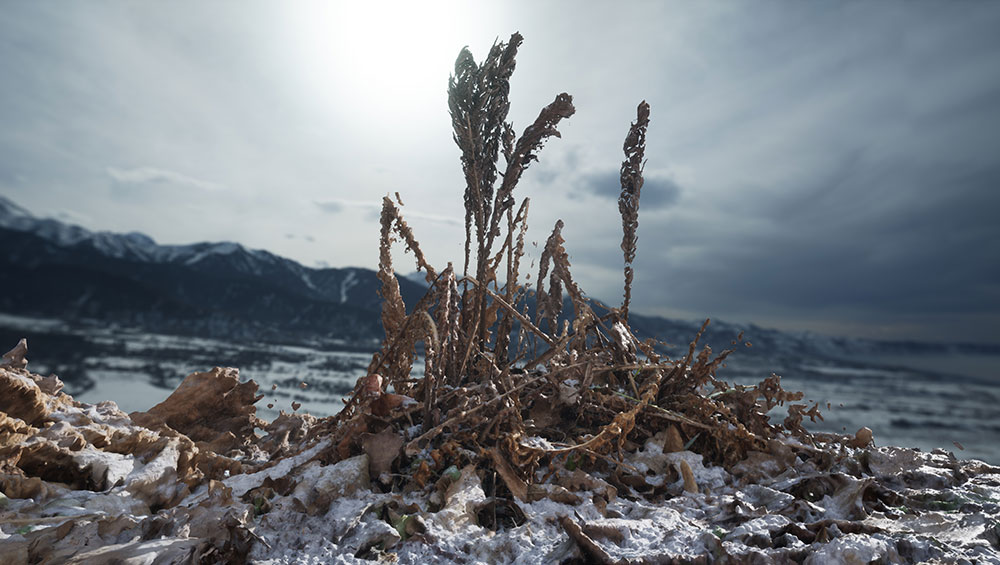
Jakob Kudsk Steensen, Berl-Berl, 2021. Courtesy of the artist.
by JOE LLOYD
Something very different will occupy Berghain this summer. The Berlin nightclub, famed for its vast post-industrial setting, weekly all-night parties and divisive door policy, will trade crystalline techno and the warm thrum of bodies for something soft, damp and contemplative.
Berl-Berl is a new installation by the Danish artist Jakob Kudsk Steensen (b1987), commissioned by Berlin’s not-for-profit art foundation Light Art Space. Inspired by Berlin’s origins as a wetland within a glacial valley, it combines video, field recordings and music by the experimental producer Arca to create an immersive virtual swamp. An enormous 40m screen will take visitors through a 3D-generated wetland landscape, while a series of smaller screens take a closer look at marshy flora. Sound will emerge from a huge moving sphere. “You don’t feel like you’re looking at something,” says the artist, “you’re within it.”
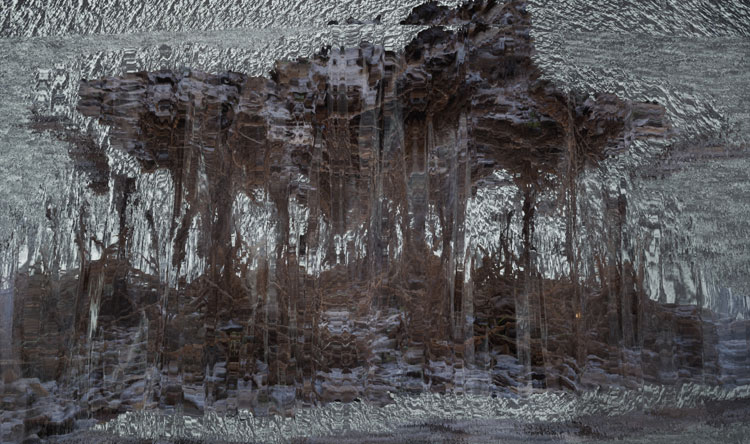
Jakob Kudsk Steensen, Berl-Berl, 2021. Courtesy of the artist.
Kudsk Steensen’s practice has been described as “environmental storytelling”. It emerges from extensive research and fieldwork. He then uses digital technologies to recreate aspects of the natural world, often working with a coterie of collaborators. Several of his pieces have been highly acclaimed, and in 2019 he was shortlisted for the Future Generation Art Prize for Re-Animated (2018-19), a video and virtual reality exhibition that reincarnated the extinct Kaua’i ʻōʻō bird in digital form.
Kudsk Steensen has made use of a variety of techniques and technology. Works such as Aquaphobia (2017), which took visitors though a dystopian post-climate change Brooklyn, mark some of the most intriguing uses of virtual reality in contemporary art to date. In 2019, he worked with the Serpentine Gallery on The Deep Listener (2019), an augmented reality piece that allowed Hyde Park’s plants and animals to jump out of visitor’s smartphones. Other works draw more on film: Catharsis (2020), also at the Serpentine, used screens and sound to immerse visitors in an undisturbed ancient forest.
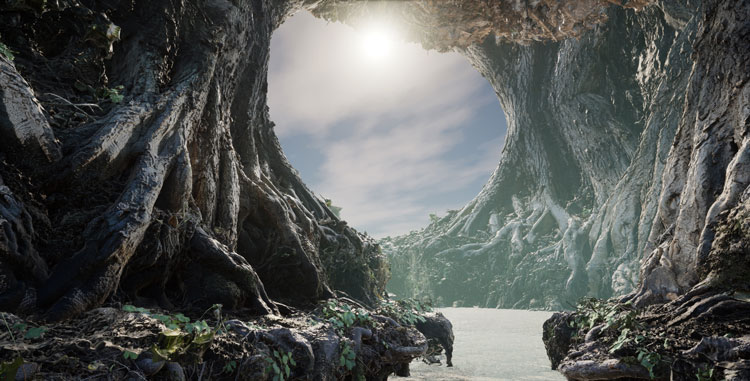
Jakob Kudsk Steensen, Berl-Berl, 2021. Courtesy of the artist.
Although nominally based in New York, Kudsk Steensen spent much of 2020 in Arles, as artist-in-residence at the environmentally focused Luma Foundation, where he is presenting a VR work centred on the crystallised animals of the Rhône delta. More recently, he has been in Berlin, preparing Berl-Berl. Studio International caught up with him ahead of Berl-Berl’s opening.
Joe Lloyd: How did Berl-Berl come about?
Jakob Kudsk Steensen: It started through a conversation with the curator Emma Enderby. She asked me if I wanted to work on a project, almost two years ago. Then we started talking to Light Art Space. Since The Deep Listener, I have been interested in connecting to the landscapes where the work is shown. For this work, I collaborated with the Museum of Natural History in Berlin. But wetlands is a theme I started to explore four or five years ago. The process begins with an idea. Then you start thinking about it, feeling it, and then you get asked by a curator, and then you talk about your idea. So it takes about four years from idea to realisation.
I think about it almost like making short films or indie games. It’s quite elaborate and has a lot of elements, but there’s still a certain scale to it.
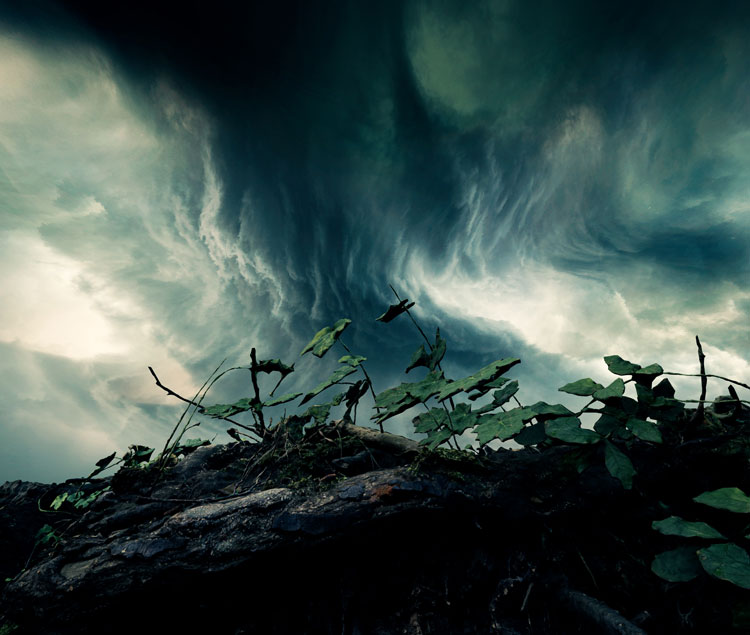
Jakob Kudsk Steensen, Berl-Berl, 2021. Courtesy of the artist.
JL: Your work is highly collaborative. How did you arrive at this approach?
JKS: I started with the typical, individualistic artist’s perspective. Though, before then, my first aim was to be a video game animator. I trained a lot early on, even before high school. When a kid first asked, “What do you want to work as when you grow up?”, my answer was: “I want to be an animator and make games and comics.” So I started training hard to draw and make. It evolved slowly to actually making virtual worlds.
Then, while I was studying, I was also running two different art spaces, so I had this really outgoing, community personality to me. That became a bigger and bigger part of the process. Now, it’s about this orchestral way of working. For Berl-Berl, I went out on my own and 3D-scanned different soil and fungi from a canoe. Then I started building a virtual world. And then as I was building that I started inviting all the other collaborators within that world to do different things within it.
JL: Even in the early 00s, some video games had astonishing world design.
JKS: As I kid, I was interested in the landscapes of the games, the spaces. I grew up in a tiny town, with about 1,000 people, and went to a Steiner school. So, throughout my upbringing, I was outside all the time. But, through friends in school, computer games came around, and we all got fascinated by them, and the landscapes more than anything else. I guess I am still, in a way.
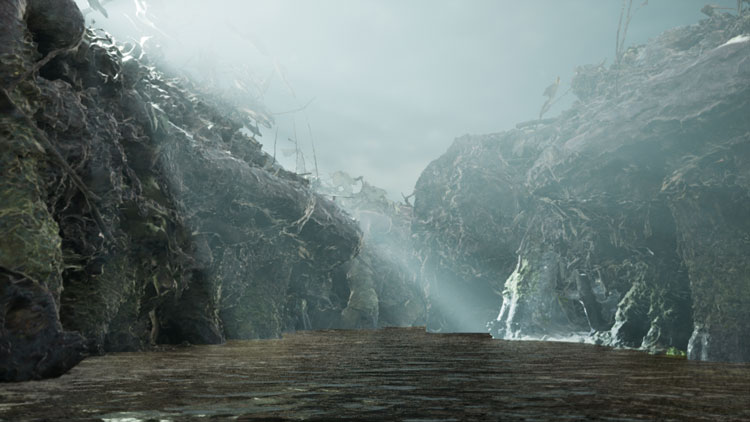
Jakob Kudsk Steensen, Berl-Berl, 2021. Courtesy of the artist.
JL: I think some of your work, such as Aquaphobia, does have an aesthetic reminiscent of games.
JKS: Aquaphobia is an interesting one. It was originally part of a big public commission for Red Hook, Brooklyn. I was a finalist, so I got the budget to make a proposal.
I didn’t win the competition, but I went and animated the work anyway. It was about the psychologies of the future landscape there, made not long after the hurricane [Sandy, which severely affected New York in 2012]. I interviewed people and they told me about their fear of rising water. So, for me, it’s a work that focuses on the combination of virtual space and psychology – the emotion, what you’re thinking and feeling inside as you move through a virtual space.
JL: Audience participation seems crucial throughout your practice.
JKS: It’s key, it’s completely essential! Sometimes I like to make work on my own: for Aquaphobia, for instance, I made the work and wrote a text, and then asked a friend [the artist Rindon Johnson] to narrate it. Sometimes I like these poetic, personal approaches. But sometimes, and also because of Covid, I don’t want to be sitting on my own. I felt: “Wow, I need to bring people together to create a project because we’ve been apart for so long.” That’s a big part of why there are so many people in Berl-Berl.
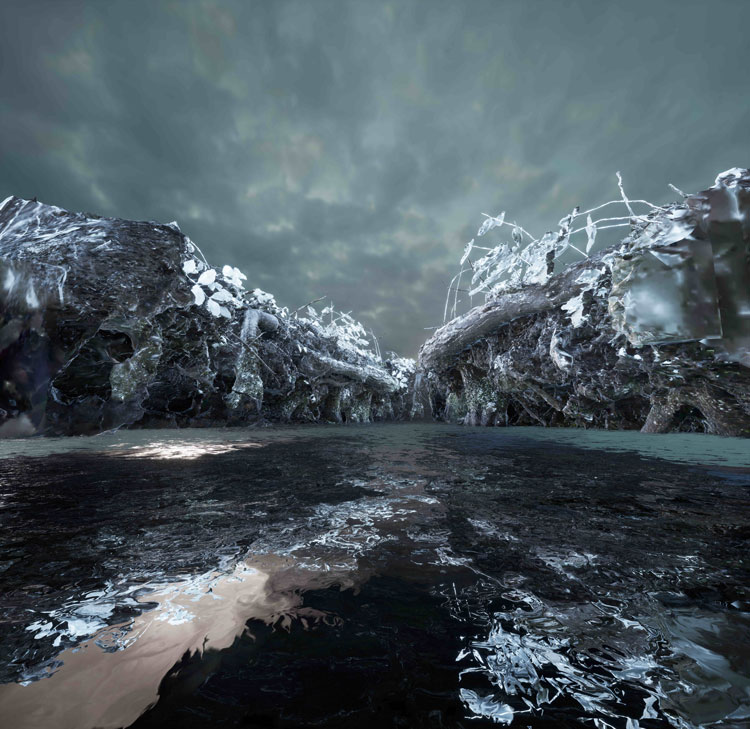
Jakob Kudsk Steensen, Berl-Berl, 2021. Courtesy of the artist.
JL: How did you approach working in Berghain, which has such a potent place in Berlin’s culture?
JKS: I thought a lot about the work’s form and correlation to the physical space as architecture and its history. Berlin is a city that is characterised by continuous shifts and transformations. The Berlin nightclub was born out of the end of the Wall, and the western club scene coming in. And the most extreme form of it, the most iconic, is Berghain. Then, because of the pandemic, Berghain has become an art space. To some, it’s quite exciting, but I know a lot of people in Berlin don’t like that, as it’s kind of a signifier of the death of the Berlin that was. “Fine art in the nightclub!”
I thought about that, which is why I have made something that’s musical. The work is a virtual swamp, but it’s also an instrument. It’s sampling together sounds from the past from swamps around Berlin, from the Museum of Natural History, with sounds from the present that I collected with [sound artist and frequent collaborator] Matt McCorkle. We went out and spent 10 days in the wetlands, and recorded everything, day and night. Then you have music and songs by the musician Arca: an artist who would actually play there normally.
All this sound is more like a cathedral, it’s kind of meditative and slow; it’s not loud and clubby. That’s where the architecture comes in. We’ve created the whole setup of speakers that can do ultra-textural, very subtle movement of sound. But it still has reference to actual music. I tried to look for this middle space between contemporary art and night club music, and a communal space that is very calm and poetic. I hope people like it.
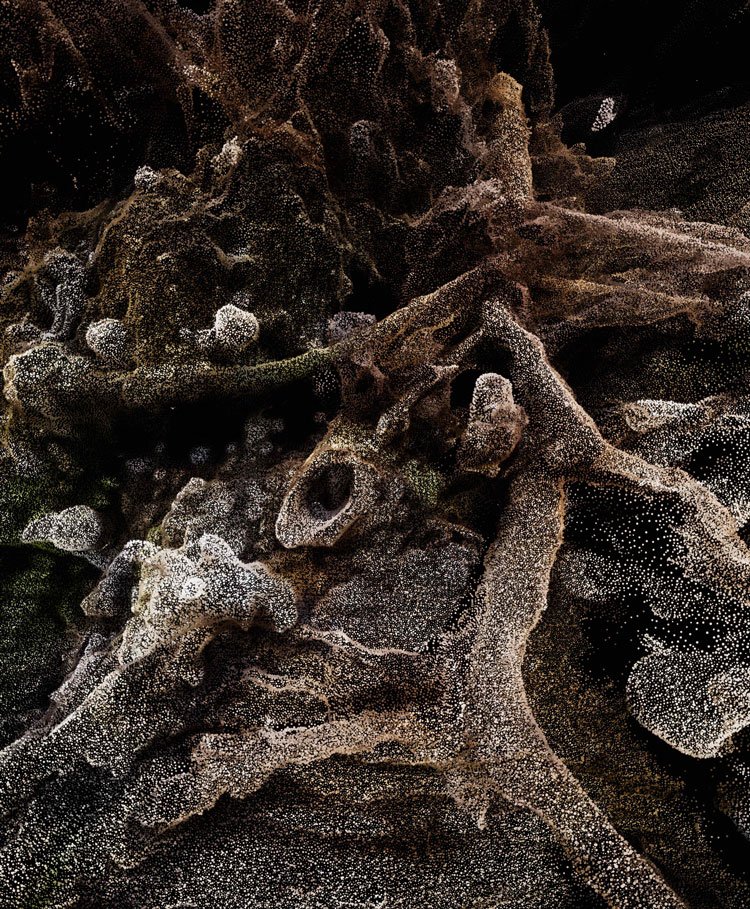
Jakob Kudsk Steensen, Berl-Berl, 2021. Courtesy of the artist.
JL: Even at full flow, Berghain always has a sort of meditative, mesmerising feeling compared to some messier clubs.
JKS: I’ve gone for this hypnotic feel and vibe. There’s repetition and change at the same time – if you stand there for hours, you’re never going to hear exactly the same thing, but there’s still the sense of repetition. It has a continuous hum, bringing you in. It’s a little like Aquaphobia actually, in that it has this sense of psychology. I hope that it’s almost like a form of slight hypnosis. That’s how I look at a nightclub – it’s this collective state of mind.
JL: What prompted your interest in wetlands?
JKS: In the past, I’ve made work about places that have quite grand narratives. Re-Animated is about an extinct bird that lived on top of the plateau on one of the oldest islands in the world – an acclamation of big, epic narratives. But I started researching wetlands because they contain 10% of biodiversity but cover just over 1% of the planet. The definition of a wetland is a land that can continually sustain freshwater.
Once I started digging into it, I learned that all the major civilisations in the world were positioned by wetlands. It’s a necessity, for freshwater and as a buffer from the sea. Then I dug deeper into the history, and found that, in the 18th century, kings started paving over them. They were seen as the antithesis of the rational mind and the modern city. But now we have this panic in the present because we have issues with sustaining freshwater.
Now they are majorly coming back. There’s a huge emphasis on wetland restoration in Brandenburg [the state that surrounds Berlin]. But an awkward thing is that I’ve found a lot of the environments I’ve worked on take place in wetlands. Red Hook was once a wetland. Re-Animated takes place in this mountain wetland. So I thought: “Maybe there is something about this type of ecosystem that kind of connects it all.”
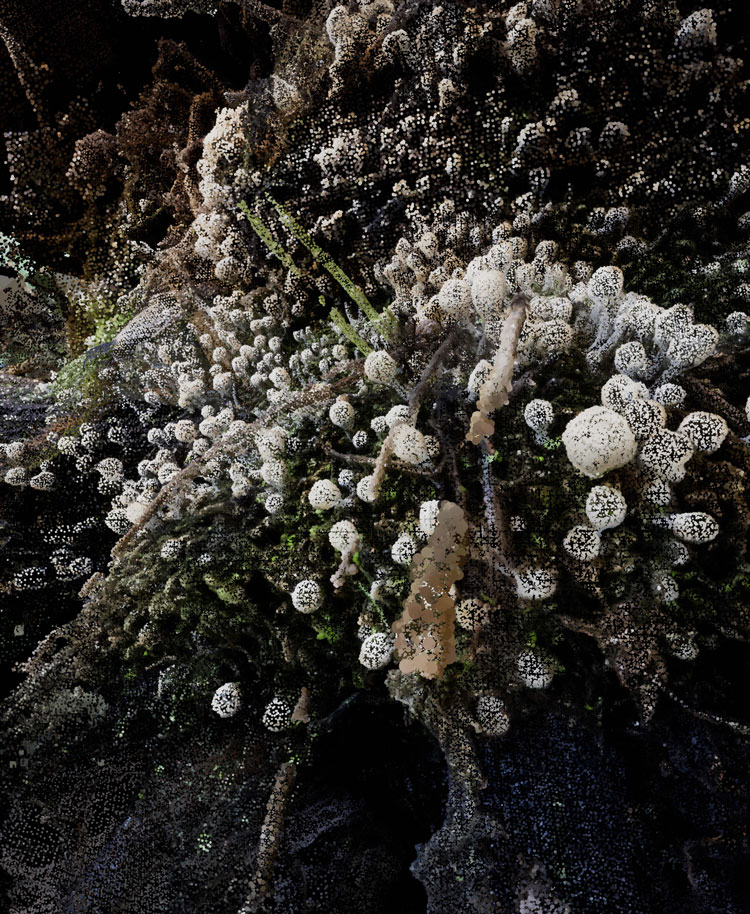
Jakob Kudsk Steensen, Berl-Berl, 2021. Courtesy of the artist.
JL: You were recently in Arles, which adjoins the spectacular Camargue wetlands.
JKS: I was there for one year as an artist-in-residence at the Luma Foundation. And that has a big wetland project which is also launching there. That’s really the space that started these new works. They have a bit of an obsessive or extreme sense of attention to texture and organic material in the landscape. And that came from the lockdown.
At the beginning of my residency in France, I had the idea of creating this very narrative wetland-focused piece, but as we went deeper into the quarantine I left all that research, and made the work raw, sensory and emotional. I thought a lot about bringing an experience and sensation to people rather than just telling a narrative, especially as we have so much screen time at the moment.
JL: Your work at Arles features VR. What do you enjoy about the medium?
JKS: What I really like is intuitive design, in the sense that you bring something corporeal to people that changes colour, space and sound. I never create things that have an emphasis on a typical user inference or a very narrative story. What I think is interesting is that you can almost design a choreography for a person.
When I make a VR piece, I look at the environment. But I also look at it as a square, with a human in it. You can create a choreography of where they’re moving and looking. It’s a very intimate choreography, a kind of sensory, poetic approach. You can play with time in interesting ways: you can have light move at 10 times the speed, but then you can slow down the leaves and water while keeping the sounds of species normal. You can mix senses and the position of time and space, whirl it around a person .
That’s my interest in VR, an intuitive and sensory thing more than a technological device per se. I come at it more from the perspective of a performance, in which the audience becomes engulfed in it and indirectly becomes a performer.
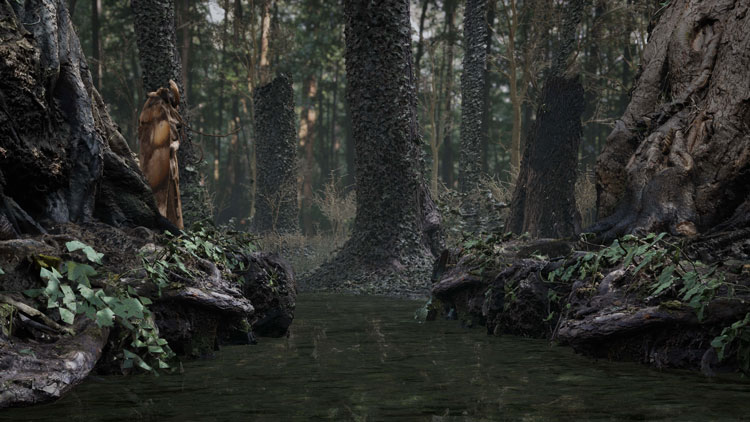
Jakob Kudsk Steensen, Berl-Berl, 2021. Courtesy of the artist.
JL: We talked about video game design earlier. Why did you decide to become an artist instead?
JKS: I created and produced some private work commercially, before I worked as an artist. The reason I stopped is because of the cultural production around them. Usually, most things you experience that are digital come from the mind. Whether a game, a film, an app, it’s designed based on certain items and aims. There is a small group of people who design it, who then allocate production to multiple people beneath. They are creating with a few pre-established items, based on discourse, history, very much from the cultural realm.
When I create these projects, I have a general idea at first – such as wetlands – but how they are depicted, the final cut, the edit, the sounds, the shapes are created entirely with the landscape. I don’t know what it’s going to look or feel like prior to starting. I didn’t know that these shapes existed until I went out into nature.
The world is magical. There’s so much we forget in the virtual, life that actually exists in the world. I just want to bring some of that back.
• Jakob Kudsk Steensen: Berl-Berl is at Halle am Berghain, Berlin, from 10 July to 26 September 2021.